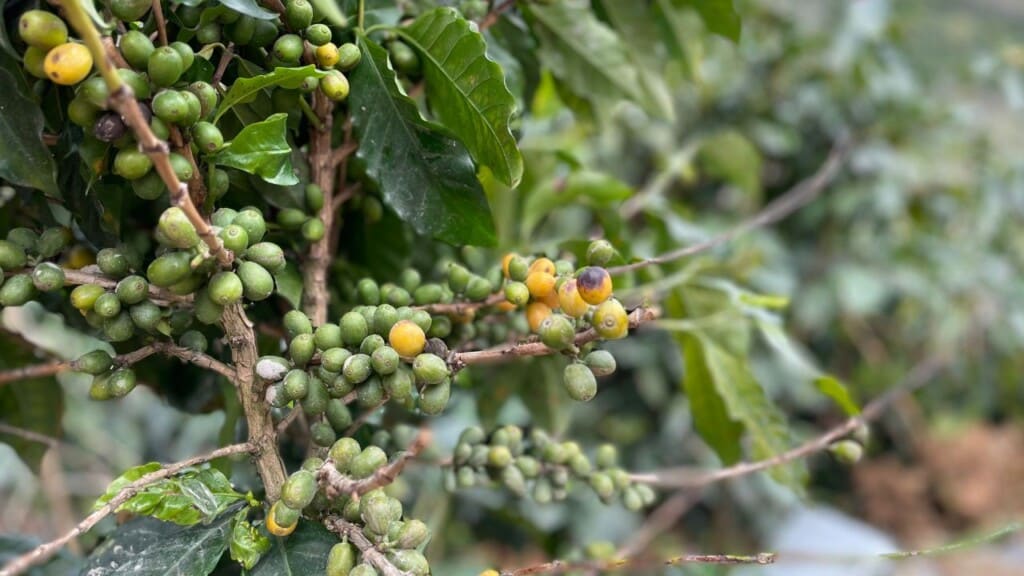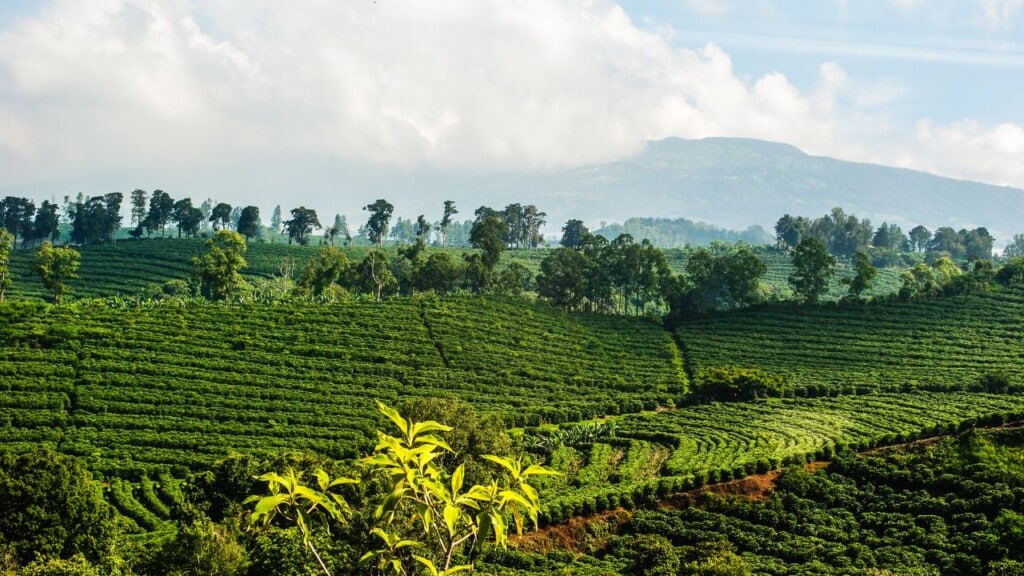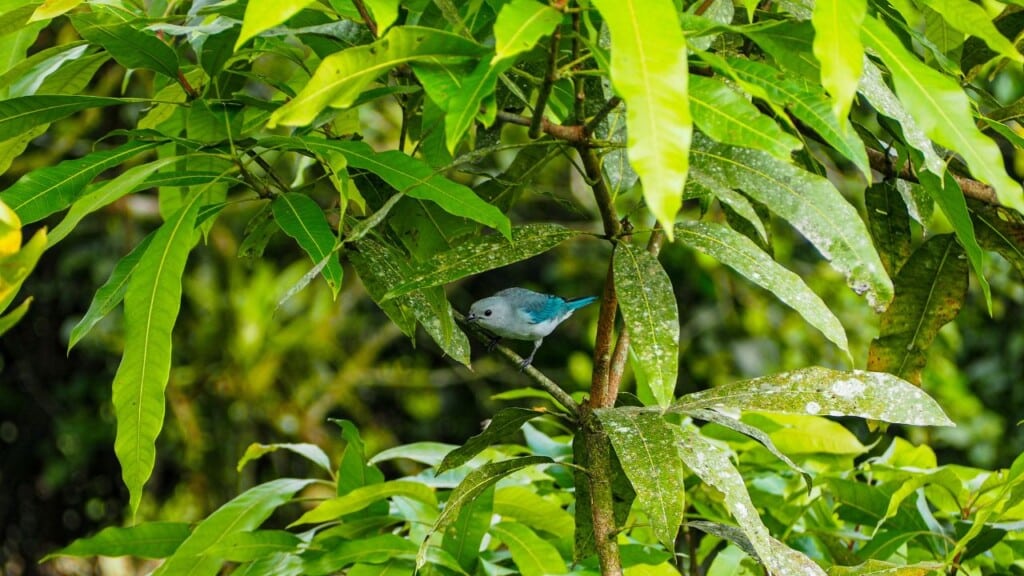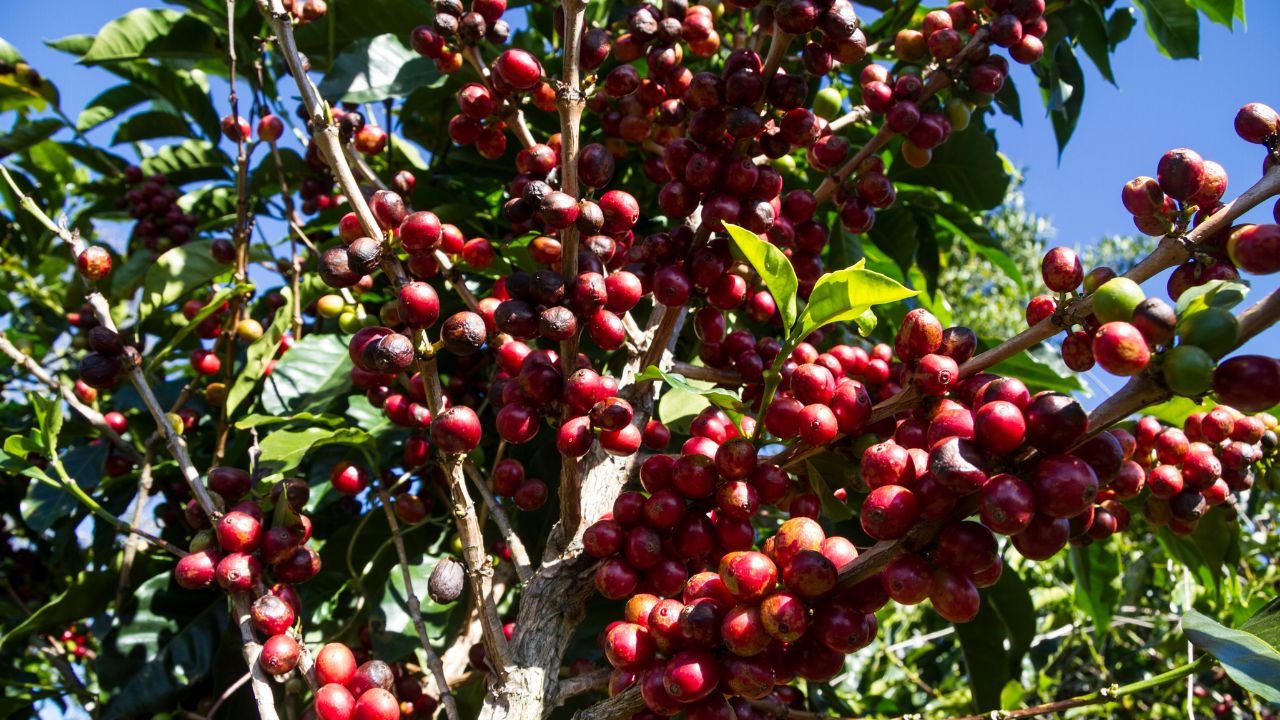Costa Rica Coffee has been a gem nestled amidst the country’s landscapes and abundant wildlife, propelling its progress for centuries. Beyond the shores and lush forests, Costa Rica takes pride in its vibrant coffee culture, which has left an indelible mark on its past, economy, and identity. With a history deeply intertwined with the sprawling coffee plantations, the tale of coffee in Costa Rica tells a captivating story of cultivation, community, and conservation.
For generations coffee has been far more than a drink in Costa Rica; it has been an integral part of everyday life and a symbol of warm hospitality. This small nation in Central America nestled between the Caribbean Sea and the Pacific Ocean shares a bond with the coffee bean—a bond that has fostered strong connections between its people and their beloved homeland.
From the hills of the Central Valley to the mist covered slopes of Tarrazú region coffee farms have seamlessly woven themselves into the fabric of Rican society. As we embark on this journey into the captivating world of coffee culture we will unravel historical threads that link this industry to our nations evolution.
We will also explore how tradition harmonizes with innovation within this sector while delving into how our commitment, to practices is reshaping not only our local but also global coffee landscape. So make sure you have a mug filled with your coffee and come along with us as we explore the history of Costa Rica’s coffee culture.
Costa Rica Coffee Landscape; From Bean, to Cup
Throughout history coffee production has played a role in shaping Costa Ricas economy. From the century coffee swiftly transitioned from being a local commodity to becoming an internationally coveted export driving the nations growth and progress.
Presently Costa Rica stands as a player in the coffee market celebrated for its unwavering commitment, to quality and sustainability. With a blend of methods and modern innovations Costa Rican coffee farmers painstakingly cultivate and harvest their beans ensuring that each stage of the process preserves the inherent flavors that define their unique brews.
As we set out on this journey to discover the history of coffee in Costa Rica we will explore the origins of coffee in these lands delve into the factors that contribute to the distinct taste profiles of Costa Rican beans and follow the intricate process that brings these beans from thriving plantations to your steaming cup of morning brew.
A Historical Legacy
The impact of coffee on Costa Rica’s economy cannot be overstated. By the mid 1800s coffee had quickly become the nations export transforming Costa Rica from an agricultural society into a thriving force in the global coffee industry. The economic effects were significant as revenue from coffee exports financed infrastructure projects like road and railway construction. Additionally the industry played a role in establishing international trade relationships that spanned across continents.
The impact of coffee on Costa Rica’s economy cannot be overstated. By the mid 1800s coffee had quickly become the nations export transforming Costa Rica from an agricultural society into a thriving force in the global coffee industry. The economic effects were significant as revenue from coffee exports financed infrastructure projects like road and railway construction. Additionally the industry played a role in establishing international trade relationships that spanned across continents.
Notable historical milestones further solidified Costa Rica’s position as a producer of high quality coffee. The establishment of coffee plantations throughout the Central Valley and various highland regions paved the way, for a growing industry. During that time coffee played a role, in driving economic transformations.
Wealthy landowners used their profits to enhance farming methods and improve the living standards of workers. It is worth mentioning that Costa Rica’s affluent coffee community played a part in establishing institutions leveraging their influence to shape governmental policies. This close connection between coffee and sociopolitical advancements highlights the influence of the coffee industry, on Rican society.
Geographical and Climatic Factors Shaping Costa Rica’s Exceptional Coffee Quality
The exceptional quality of Costa Rica’s coffee is greatly influenced by the climatic factors to the country. Costa Rica’s varied landscapes, including mountains and coastal plains create microclimates that nurture a wide range of coffee flavors. One key contributor, to the taste of Rican coffee is its volcanic soil, which is rich in minerals due to volcanic activity. This nutrient rich soil not provides nourishment but also imparts the distinctive flavors for which Costa Rican coffee is renowned.
The altitude at which coffee is grown in Costa Rica plays a role in shaping its nuanced characteristics. Higher elevations offer cooler temperatures allowing the coffee cherries to develop flavors over a longer period. The altitude also affects bean density making them denser and more resilient.
These unique conditions at altitudes contribute to an array of flavors and aromas found in coffees from various regions such as Tarrazús high altitude farms and Heredia’s mid level plantations each with its own distinct personality.
An overlooked factor behind Costa Rica’s coffee lies in its microclimates—the unsung heroes responsible, for this excellence. Costa Rica’s unique geographical features, situated between two oceans and characterized by elevations create a mosaic of climate zones. These climate zones have an impact, on aspects like temperature, rainfall and humidity which in turn affect the growth and ripening of coffee cherries.
Coffee cultivators in Costa Rica carefully choose the locations for their plantations based on these microclimates. This allows them to harness the characteristics of each region to craft coffees that possess unmatched complexity and richness. Whether you’re enjoying a cup of coffee with floral hints or one, with fruity undertones you’re experiencing the expertise behind leveraging these varied microclimates to create truly exceptional flavors.
Coffee Types and Flavors
In Costa Rica there is a variety of coffee beans each carefully grown and nurtured in the country’s microclimates. These different types of beans contribute to a range of flavors that coffee lovers, over the world appreciate. Lets explore some varieties of coffee beans cultivated in Costa Rica and discover the flavors they offer:
- Typica: Typica is one of the foundational coffee bean varieties known for its balanced flavor profile representing the essence of Costa Rican coffee. It has a body with an acidity that brings forth fruity notes reminiscent of citrus and berries. These vibrant flavors dance on your taste buds creating an refreshing experience. Due to its significance and versatility Typica holds a place in Costa Rican coffee production.
- Geisha: The Geisha variety showcases the artistry behind growing coffee. Its complex nature offers a journey. The floral aroma, often compared to jasmine and bergamot blends harmoniously with an array of fruit notes. With its body and intricate flavors Geisha coffee has gained acclaim, among discerning coffee enthusiasts captivating hearts with its enchanting and ethereal qualities.
- Catuai: With its resilient nature the Catuai variety has gained recognition. It is a cross, between Mundo Novo and Caturra combining the best of both worlds. This variety showcases its ability to thrive in environments while maintaining its character and flavor profile. Coffee enthusiasts appreciate Catuais versatility as it delivers an drinking experience regardless of the changing microclimates it encounters throughout its journey, from farm to cup. Catuai coffee, known for its balanced flavor profile often delights with hints of milk chocolate, nutty undertones and a subtle touch of citrus. This versatility has made Catuai a top choice, among coffee farmers enabling them to consistently produce beans that cater to the preferences of a wide range of coffee enthusiasts.
- Bourbon: Originating from the island of Bourbon ( Réunion) Bourbon variety has found an embracing home in Costa Rica. This cherished variety is renowned for its velvety body, accompanied by flavors of red fruits, caramel and brown sugar. As the Bourbon beans undergo their journey interacting with Costa Rica’s soils and microclimates they yield a cup that truly embodies the essence of Costa Rican coffee craftsmanship.
- SL28 and SL34: Though not indigenous to Costa Rica, the SL28 and SL34 varieties developed in Kenya have discovered a second home on the country’s coffee farms. These varieties often bring forth bold and succulent flavors with acidity. Tasting notes can range from currant and red berries to delicate hints. The introduction of these varieties to Costa Rica’s growing conditions adds a touch, to the country’s diverse coffee offerings.
- Pacamara: The Pacamara variety stands as a blend of tradition and innovation—a testament to fusion. Pacamara beans are a blend of Pacas and Maragogipe known for their size compared to regular coffee beans. When brewed this coffee variety offers a taste profile that ranges from chocolate to tropical fruits. The uniqueness of its size and flavors adds a touch, to Costa Rica’s selection of coffees.
With every sip of coffee one can truly appreciate the hard work and dedication put in by the country’s farmers the richness of its fertile soil and the remarkable influence of its varied microclimates. These different coffee varieties beautifully showcase how natures gifts combine with creativity resulting in a symphony of flavors that mirror the captivating beauty and intricate nature of Costa Rica itself. Whether enjoyed as a morning ritual or cherished as a moment Costa Rican coffee invites us to indulge in the craftsmanship and passion poured into each cup.
Fact Section: Costa Rican Coffee Trivia

Costa Rican coffee holds a plethora of intriguing facts that offer a deeper glimpse into its significance on the global stage. From its historical roots to its role as a major coffee supplier, let’s uncover some captivating trivia about Costa Rican coffee:
- Coffee Pioneers: Costa Rica’s coffee journey began in the 1700s, when the first coffee plants were introduced by Spanish settlers. However, it wasn’t until the mid-1800s that coffee became a dominant force in the country’s economy. The crop quickly gained traction, and by the late 19th century, coffee was a primary export, driving economic growth and transforming the nation’s landscapes.
- Shade-Grown Elegance: Costa Rican coffee farming often embraces environmentally friendly practices, with many plantations opting for shade-grown cultivation. This method not only preserves local ecosystems but also results in coffee beans with complex flavors. The canopies of diverse trees provide habitat for birds and other wildlife, fostering a sustainable and harmonious coffee-growing environment.
- Ethical Sourcing: Costa Rica has been at the forefront of fair trade and ethical coffee production. Many coffee cooperatives and organizations prioritize providing fair wages and improved working conditions for farmers. This commitment to ethical practices not only supports local communities but also contributes to the exceptional quality of the coffee produced.
- Tarrazú’s Triumph: The Tarrazú region stands out as one of Costa Rica’s most renowned coffee-growing areas. Its high altitudes and unique microclimate contribute to beans with exceptional flavor complexity. Tarrazú coffee is celebrated for its bright acidity, full body, and delightful tasting notes that often include hints of citrus, berries, and chocolate.
- Coffee Culture Conservation: Coffee plays a vital role in preserving Costa Rica’s rich biodiversity. The practice of incorporating coffee farms within natural landscapes, known as agroforestry, helps conserve native species and prevent deforestation. This sustainable approach contributes to the country’s commitment to environmental preservation.
- Global Coffee Player: While Costa Rica may be small in size, it punches well above its weight in the global coffee arena. The country consistently ranks among the world’s top coffee producers, exporting high-quality beans to markets across the globe. Costa Rican coffee’s reputation for excellence contributes significantly to the country’s economy and international trade relationships.
As you savor a cup of Costa Rican coffee, let these intriguing facts enrich your appreciation for the rich history, diverse landscapes, and ethical practices that make each sip a journey through Costa Rica’s vibrant coffee culture.
Preserving Tradition: Coffee in Costa Rican Culture

Coffee, in Everyday Life
In the landscapes of Costa Rica coffee has become a part of daily routines going beyond just a beverage. Its cultural significance is evident in how it’s ingrained in Costa Rican households and social interactions. Coffee acts as a bridge that brings together generations, friends and even strangers fostering connections and conversations that transcend time and distance.
From the break of dawn when the first rays of sunlight paint the horizon to the moments of sunset coffee remains a companion in Costa Rican homes. It goes beyond being a drink; it creates shared experiences that unite families around kitchen tables and cozy patios. The aroma of brewed coffee adds warmth to conversations whether they involve thoughts or heartfelt stories. In culture offering a cup of coffee to guests is seen as a gesture of hospitality—an invitation to stay longer and engage in meaningful exchanges.
Costa Rica’s traditional methods for preparing coffee reflect their dedication to savoring each moment and nurturing connections. The “chorreador,” a brilliant device for making coffee embodies the essence of this tradition. With its frame and cloth filter the chorreador takes us back, to an era when simplicity and craftsmanship were highly valued.
To make coffee using the chorreador you’ll need to put ground coffee into the cloth filter and pour water over it. This allows the brewed coffee to slowly drip into a cup placed underneath. This relaxed process encourages taking a moment to appreciate not the flavors of the coffee but the connections that are formed through shared experiences.
In Costa Rica coffee is more, than a beverage. It serves as a bridge connecting generations, cultures and conversations. The act of brewing and enjoying coffee together embodies the essence of identity showcasing their dedication to fostering relationships and finding happiness in life’s simple pleasures.
Coffee and Festivals
In Costa Rica, where coffee holds more, than a beverage status—it has become an integral part of our cultural identity—the celebration of this cherished drink goes beyond the realm of kitchens and coffee plantations. It becomes the centerpiece of festivals and events that honor the rooted history, diverse flavors and cherished traditions associated with coffee. These vibrant celebrations not showcase our nations expertise in coffee. Also provide a captivating glimpse into the very essence of Costa Rican culture.
The anticipation for coffee related festivals is palpable attracting both locals and tourists with enthusiasm. Among these celebrations is the annual “Festival de la Luz,” or Festival of Lights held in San José—the capital city of Costa Rica. This mesmerizing parade serves as a display of creativity, music and dance. It often features decorated floats that pay homage to the significance of coffee within our country.
Similarly we have the extravaganza known as the “Coffee National Festival” in Naranjo—where visitors can immerse themselves in coffee tastings while learning about every aspect of its production process. Additionally they can revel in enchanting performances featuring music and dances that beautifully honor Costa Rica’s coffee heritage.
These festivals are not about entertainment; they encompass rituals and customs that underscore how deeply intertwined coffee is, within our society.
From coffee tasting sessions that allow participants to sample a variety of flavors to competitions, among baristas showcasing the art of coffee preparation these events serve as a platform for celebrating the skill and camaraderie that characterize coffee culture.
Whether you’re witnessing the chorreador brewing method, in action or taking part in coffee themed games and activities you’ll have the opportunity to connect with the origins of coffee production and engage with the customs that have been passed down through generations. In the tapestry of festivals the celebration of coffee is an integral thread that intertwines history, community and creativity. These events not pay tribute to the country’s heritage but also invite participants to savor a cup of coffee that truly embodies Costa Rican culture.
Conservation and Sustainable Efforts in Costa Rican Coffee Industry

Eco Friendly Farming Practices
Costa Rica’s coffee industry is an example of farming practices that work in harmony, with the natural environment. The country’s dedication to eco farming shows an understanding of how the land, its resources and the production of exceptional coffee are interconnected. This commitment not protects the regions wildlife but also ensures the long term success of the coffee industry.
One key practice in coffee farming is agroforestry, which exemplifies the perfect blend of agriculture and conservation. It involves integrating coffee plantations with trees and other crops to create an ecosystem that supports various species. This approach not improves soil fertility.
Prevents erosion but also provides homes for birds and insects promoting a natural balance that reduces reliance on chemical interventions. Agroforestry embodies coffee cultivations holistic philosophy emphasizing the importance of giving back to the land that sustains this industry for generations.
Another distinctive feature of coffee production is shade grown coffee, which demonstrates a commitment to quality and sustainability. By cultivating coffee plants under tree canopies the cherries mature slowly resulting in beans, with exceptional flavors and aromas.
Besides the taste shade grown coffee has benefits such, as carbon sequestration mitigating climate change and providing important habitats for migratory birds. This practice doesn’t just result in coffee beans. Also maintains a delicate balance between agricultural needs and environmental preservation.
Costa Rica’s dedication to coffee cultivation is further emphasized by their use of farming methods. By avoiding fertilizers and pesticides organic farming protects soil health preserves water sources and minimizes the impact on surrounding ecosystems. This commitment to practices reflects Costa Rica’s standing respect for the land and their desire to pass on a thriving environment to future generations.
In todays world where sustainable practice’s crucial Rican coffee farmers continue to lead the way in agriculture that respects both nature and quality. These practices embody the enduring values of the nation demonstrating how a commitment to the earth can not result in coffee but also create a brighter future, for everyone.
Frequently Asked Questions about Costa Rican Coffee

1. What Makes Costa Rican Coffee Unique?
The distinctiveness of coffee arises from its exceptional growing conditions, which include volcanic soil, diverse microclimates and high altitudes. These factors contribute to a range of flavor profiles ranging from bright and citrusy, to rich and chocolatey making Rican coffee a favorite among coffee enthusiasts.
2. How Does Costa Rica Contribute to the Sustainability of Coffee?
Costa Rica is at the forefront of coffee cultivation. The country practices agroforestry by growing coffee plants alongside trees promoting biodiversity. Moreover they employ shade grown and organic farming methods to minimize impact and support ecosystems. These practices showcase Costa Ricas commitment to coffee production.
3. Can Visitors Experience the Coffee Culture in Costa Rica?
Absolutely! In Costa Rica there is a plethora of opportunities for visitors to immerse themselves in the coffee culture. From guided tours of plantations that provide insights into the coffee production process to hands on experiences where you can indulge in tastings travelers can fully embrace the heritage and knowledge surrounding the art of making coffee.
4. Where Can I Purchase Authentic Coffee?
You can find Rican coffee in local markets, specialty coffee shops, as well, as through online retailers. When looking to purchase coffee it’s important to check for labels that indicate the origin of the beans and consider buying from certified producers. This not supports practices but also ensures that you’re getting an authentic product.
5. How does coffee impact culture?
Coffee holds a rooted place, in Rican culture influencing various aspects of daily life, traditions and social interactions. It symbolizes hospitality. Extends a welcome to guests. Additionally it plays a role in festivals and celebrations reflecting its cultural importance.
6. What are some notable regions in Costa Rica known for coffee production?
Costa Rica boasts regions where coffee is grown each with its own unique characteristics. Tarrazú, Central Valley and Tres Ríos are particularly famous for producing beans with flavor profiles due to their altitudes and distinctive microclimates.
7. What is the role of trade in the Rican coffee industry?
Fair trade practices play a role in the production of Rican coffee. Many cooperatives and organizations prioritize providing wages. Improved working conditions for farmers. By supporting trade coffee consumers contribute to the well being of communities as well as the sustainable growth of the coffee industry.
8. How has coffee influenced the history of Costa Rica?
Coffee has had an impact on shaping both the history and economy of Costa Rica. It has played a role throughout periods by driving economic growth and development, within the country.
From its inception, in the century to its rise as an export in the 19th century coffee played a transformative role in shaping the nations landscape driving economic growth and influencing political developments.
9. What is the significance of Coffee Festivals in Costa Rica?
Coffee festivals in Costa Rica serve as celebrations of the country’s coffee culture storied history and cherished traditions. These lively events offer platforms to showcase the artistry involved in coffee production educate visitors about the coffee making process and foster a sense of community among passionate coffee enthusiasts.
10. How does Rican coffee contribute to preserving the environment?
Rican coffee cultivation practices such as agroforestry and shade grown methods actively contribute to conservation by safeguarding native ecosystems curbing carbon emissions and providing crucial habitats for wildlife. Through these practices that prioritize biodiversity preservation Costa Rica demonstrates its commitment, to responsible farming and ecological balance.
Conclusion: Embracing the Bean

In the landscapes of Costa Rica the story of coffee comes alive like an intricate tapestry woven with threads of history, culture and sustainability. Exploring the heritage of Rican coffee not only reveals the exceptional quality of the beans but also showcases the deep rooted connection, between coffee and the identity of this nation.
From its beginnings with settlers to its rise as a major player in the global coffee industry Costa Rican coffee has surpassed being just a beverage to become a symbol of warmth, tradition and community.
The role that coffee plays in culture is a testament to its enduring importance. It is a ritual that brings families together an act of hospitality extended to guests and a common thread that runs through festivals, celebrations and conversations. The commitment to practices such as agroforestry and organic farming demonstrates the country’s respect for the land and its dedication to preserving natures abundance for generations.
Costa Rica’s rich coffee heritage is a treasure trove filled with flavors, stories and traditions; each cup encapsulates the journey from soil to sip. It serves as a reminder that such a humble bean has the power to bridge generations, cultures and landscapes while uniting us in our appreciation, for natures gifts and human creativity. As we toast to the scents and tastes, in our cups lets also raise a glass to the enduring spirit of Rican coffee and its contribution, towards building a sustainable lively and interconnected world.
If you have been fascinated by Costa Rica’s rich coffee culture and wish to explore more about this topic, we invite you to visit our blog to discover more articles full of valuable information. Also, if you have questions or need personalized advice, feel free to contact us via WhatsApp. We are here to help you delve deeper into the world of coffee.




